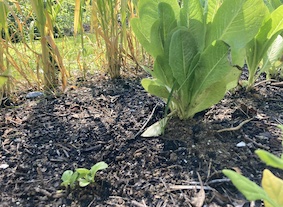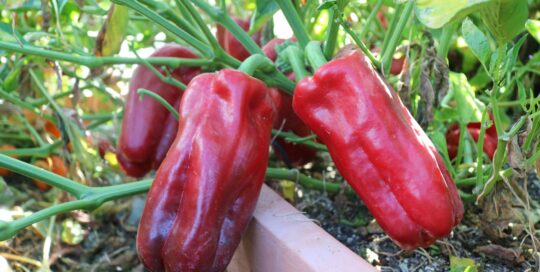Succession Sowing and Planting
Views: 3346

I’m the kind of woman who likes to get the most bang for her buck. I make use of bags until the bags tear. I squeeze as much out of the toothpaste tube as possible and even reuse envelopes. Waste not, want not, right? Whenever possible, I apply this same ideology to my small community garden plot. In the garden world, squeezing the most out of your space takes on many forms. I am a firm believer in succession sowing and planting. It’s a simple concept: One crop or planting follows another, from spring through fall.
Succession sowing and planting
In early spring, cool-season crops such as spinach, chard and peas can be sown directly into the ground. I’ll replace some spinach with lettuce as spring warms up. Once those early crops have been harvested, in go crops that are a bit more demanding of heat. More lettuce for a few more weeks, followed by beans, cucumbers, peppers, tomatoes, squashes, and so forth. When those start to fade with the close of summer, it’s time for phase two of cool-season crops.
I add another succession to the succession planting, too. Instead of sowing all my spinach or lettuce or beans or chard all at once, I stagger the sowings. A small row of spinach a week or two apart for three or four weeks—or for as long as I feel I can push my luck—works out well. Better to stagger than to have too much produce to harvest all at once.
Now, all the above is fine and dandy in a typical year. This year? Not so typical.
Dealing with wet weather
Here in the Northeast, as well as in many other places across the U.S., spring has been unrecognizable. Cool and damp has been the norm. Spinach and lettuce and chard like cool, but nothing likes the damp. Water does help with germination, but wet wet wet conditions don’t help anything.
I’ve followed the above succession sowing strategies since mid March, and I have very little to show for it. By this time last year I had a pretty good spinach crop going. Lettuces and chard, too. This year, the seedlings that have germinated—I’d say about 50% of what I’ve sown—are only about one inch tall. I did try a staggered second row of spinach and lettuce, and those are just mere thoughts of seedlings, still trying to find the energy to push themselves about the soil surface. The good news is that the weed seedlings are equally unhappy and have been kept in check.
The sun will emerge. The air and soil will warm. The question is when. I’m guessing that when the sun and air and soil do align for good growing conditions, the garden will be ready to burst forth. There goes the succession plan.
Meet Ellen Wells
When you’re raised on a farm, you can’t help but know a thing or two about gardening. Ellen Wells is our expert on edible gardening.…
Ellen's Recent Posts

Pepper Red Impact an All-America Selections Winner






